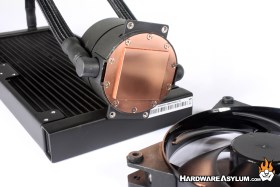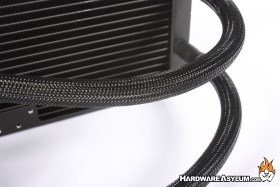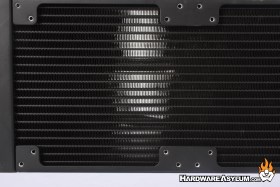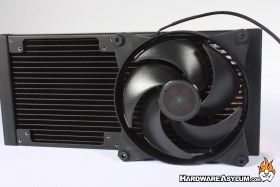Cooler Master MasterLiquid Pro 280 AIO Cooler Review
Author: Dennis GarciaMasterLiquid Pro 280 Overview
Cooler Master has elaborated on the AIO concept and created a design that promises to be more efficient by separating the pump from the cold plate. In doing do they have created two chambers, one for the pump and cold liquid coming from the radiator and a hot side for liquid leaving the cold plate. Visually we have a separated pump and waterblock that just happen to be stacked on top of each other.
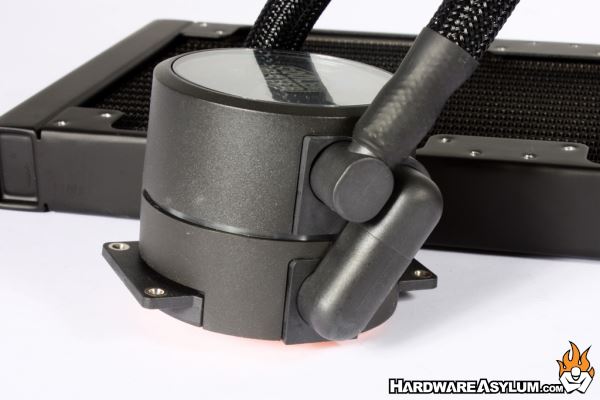
This affords Cooler Master to change how fluid is directed over the cold plate. The Cooler Master FlowOpt Technology encompasses a skived UltraFine Microchannel block design using a process they call “spraying” the CPU. In reality this means they are directing coolant down through the center of the waterblock so it can exit out the sides thus increasing flow and heat absorption.
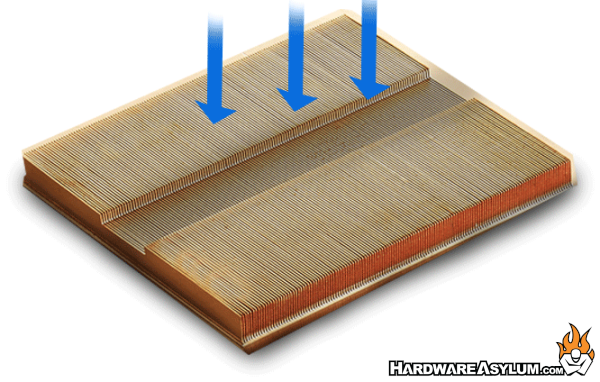
Some of the classic waterblocks used this tekniq and even expanded on it with custom jets to match the flow and pressure patterns of the rest of the system.
The heatsink base is machined flat and comes with a brushed finish. You will see that the copper base is squared off at the size of an LGA 2011 processor and unlike some of the other AIOs I have used a good portion of the block makes direct contact with the CPU.
One of the revisions which have been made is the addition of fully braided FEP tubing. These new tubes can be found on the MasterLiquid Pro 140 and MasterLiquid Pro 280 at launch and will be rolled down to previous versions too. This upgrade was in direct response to comments from the community and reviewers, like me, against the visual of the ribbed style tubes. There are some benefits to having FEP style tubing like reduced liquid dissipation and longer life expectancy however, computer enthusiasts are accustomed to two things, rubber hoses on AIO coolers and braided cables. By offering a braided hose Cooler Master so maybe in the future they can just dress the hoses up a bit.
Most watercooling radiators have been adapted for use in computers. The first were repurposed automotive heater cores and later the popular “Black Ice” design was adopted as the defacto standard for computer cooling. While the “Black Ice” style radiator design is efficient it works on the principle of air resistance.
Of course fan performance is a deciding factor when choosing a cooling solution and the MasterLiquid Pro 280 comes with two MasterFan Pro 140mm Air Pressure fans. Each fan moves about 82 CFM @ 2800 RPM with a noise level of 36dBA (at full tilt). The PWM controller will spin the fans down based on your chosen fan profile and you can further influence this using the built in fan profiles switch.
Both fans are set to Q Mode (quiet) that will limit the maximum speed to 2200rpm and reduce overall airflow by 10 CFM. Given that this is an air pressure fan that reduction should have little effect on overall cooling.

